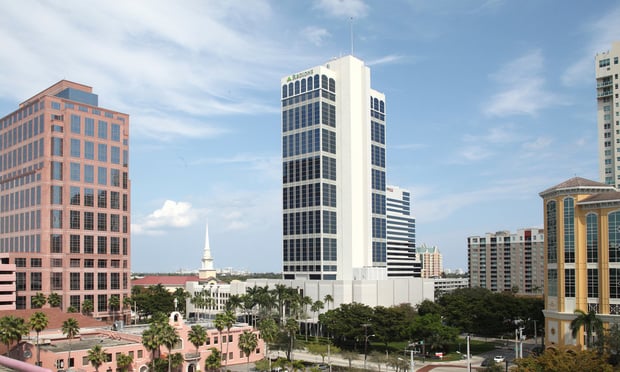reported a possible sale last week.
Terms of the pending transaction were not disclosed. Recent published reports have speculated that given the current market and the nature of the sale--a move by a troubled financial services giant looking to divest assets to help repay $45 billion in federal loans--the two properties would sell for around $100 million, about a third of what they would have fetched two years ago.
What is certain is that the deal is not a sale-leaseback and that AIG will be vacating its 1.4 million square feet of space at the 66-story 70 Pine and 16-story 72 Wall, which are connected by a skywalk. AIG has owned 70 Pine since 1976, when it purchased the Art Deco office tower for $15 million.
A source familiar with the matter tells GlobeSt.com that AIG remains committed to a Downtown presence, and that employees will remain at 72 Wall through the end of this year and at 70 Pine through the end of 2010. Following that, the employees will be relocated to 180 Maiden Ln., where the company subleased 800,000 square feet from Goldman Sachs a year ago, and other existing AIG offices nearby.
The New York Post reported last week, before the buyers were known, that there were plans to turn the properties into a mixed-use development. However, it's not known what plans YWA and Kumho have for the towers; calls to YWA were not returned by deadline.
According to a release from CBRE, the acquisition represents a major strategic initiative by the YWA/Kumho partnership to establish an investment program focused on Manhattan real estate opportunities. The move symbolizes a broader commitment by Korean institutions to overseas investment, the release states. Kumho director Y.C. Kim says in a release that "the investment is based on our optimistic view on the future of Wall Street, New York City and the US financial services industry."
In the view of Bruce Mosler, president and CEO of Cushman & Wakefield, the 70 Pine deal could signal a return to the days of 2004, when foreign investors accounted for 32% of Manhattan commercial property sales, according to Real Capital Analytics data. "I think we're coming back to that," Mosler tells GlobeSt.com. "Based on the weaker dollar, the safe haven and the yield that you'll be able to see, people are going to say 'that is the risk/reward ratio that I'm absolutely prepared to take.' The US and other gateway cities around the world are going to be the premier target for that capital investment."
Want to continue reading?
Become a Free ALM Digital Reader.
Once you are an ALM Digital Member, you’ll receive:
- Breaking commercial real estate news and analysis, on-site and via our newsletters and custom alerts
- Educational webcasts, white papers, and ebooks from industry thought leaders
- Critical coverage of the property casualty insurance and financial advisory markets on our other ALM sites, PropertyCasualty360 and ThinkAdvisor
Already have an account? Sign In Now
*May exclude premium content© 2024 ALM Global, LLC, All Rights Reserved. Request academic re-use from www.copyright.com. All other uses, submit a request to [email protected]. For more information visit Asset & Logo Licensing.








